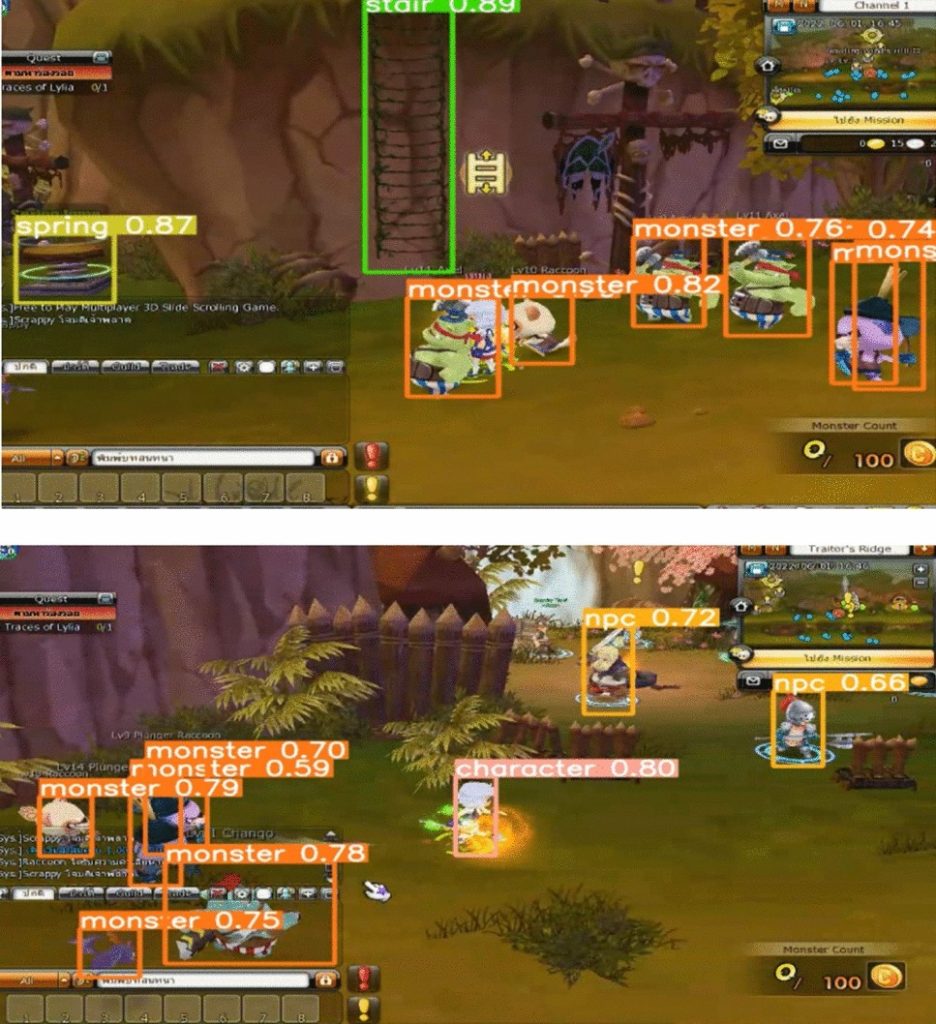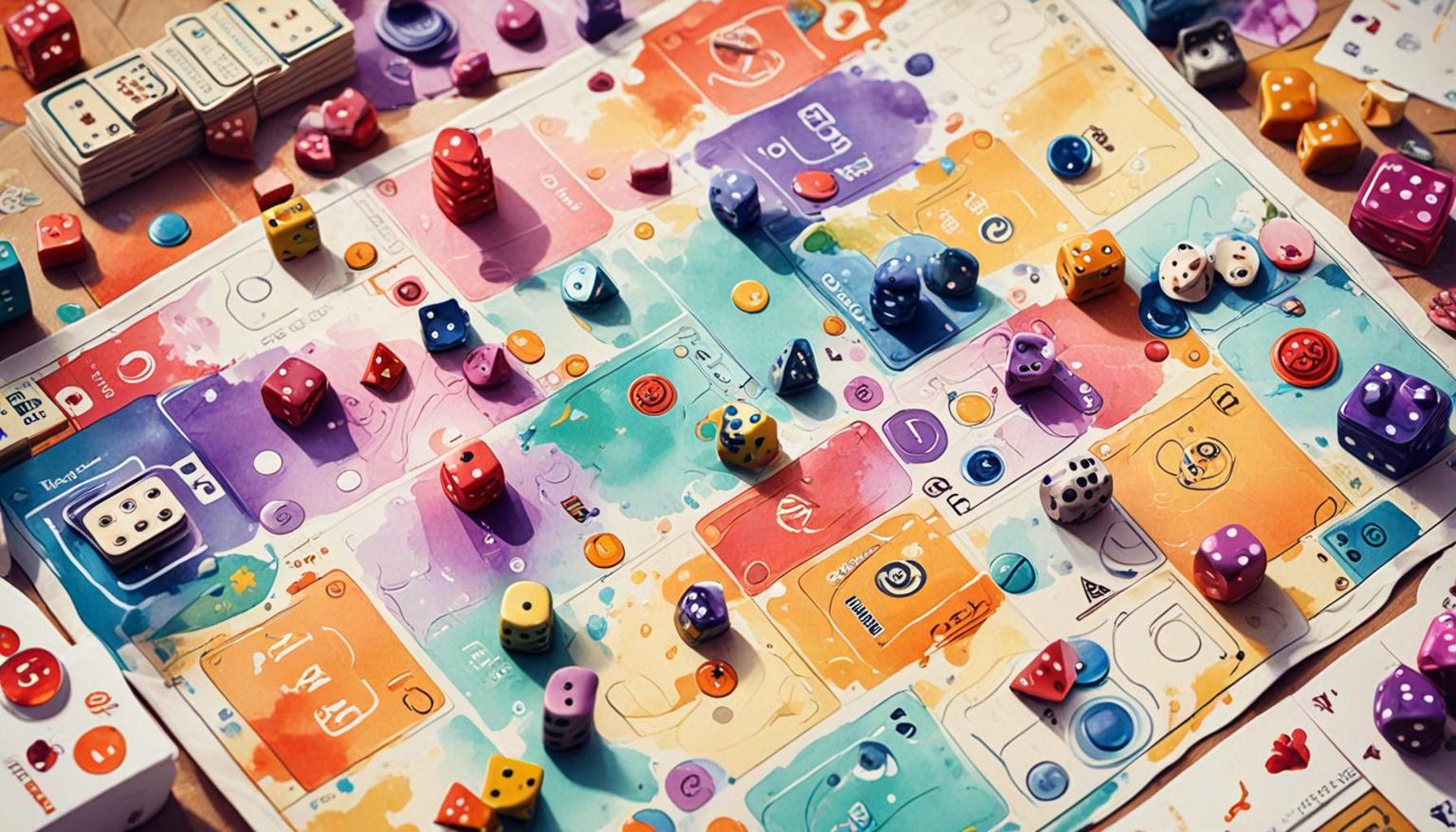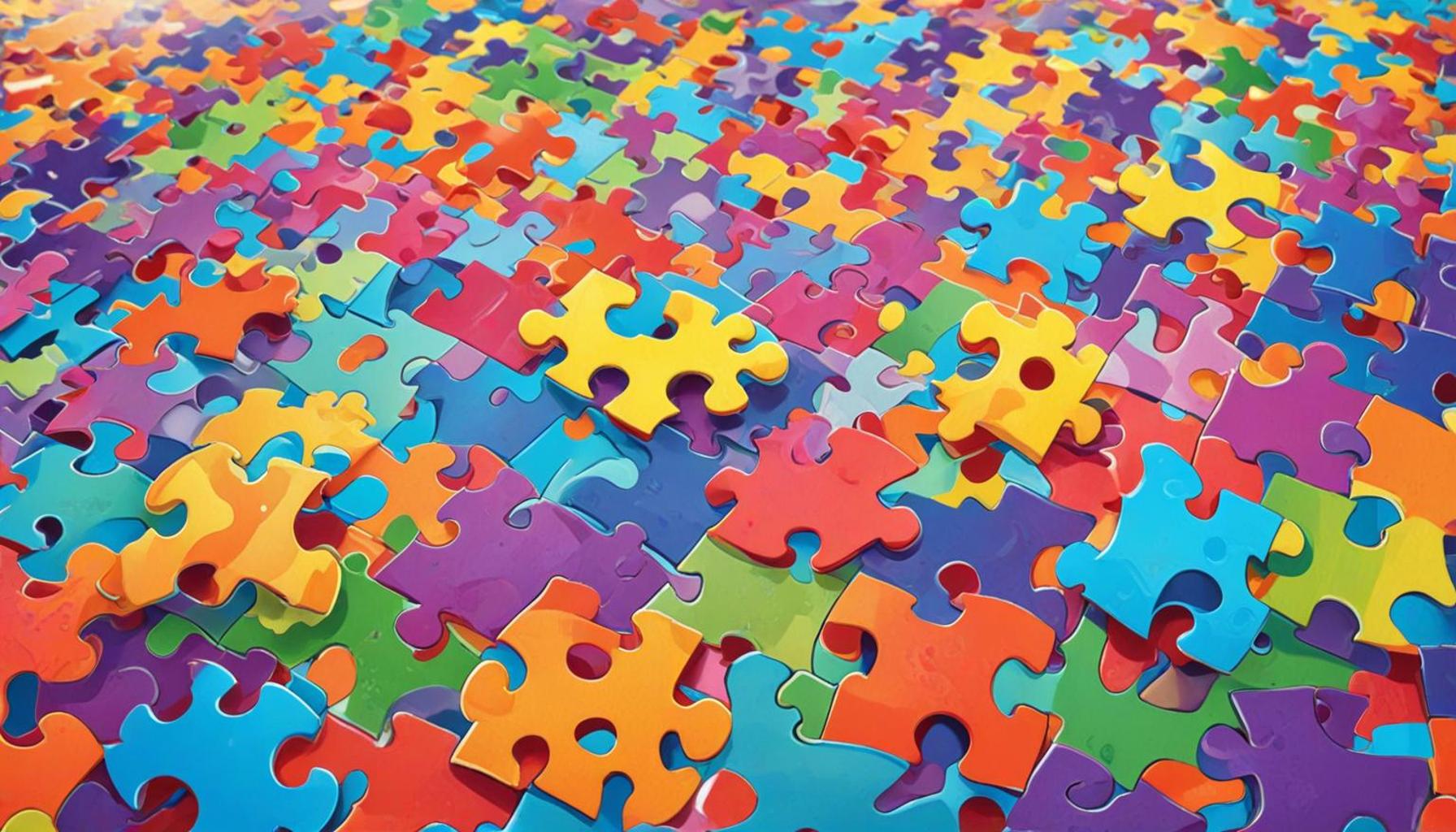Pattern recognition in simulation games: how behavior prediction affects player performance

The Intricate Mechanics of Simulation Games
In the ever-evolving landscape of simulation games, players immerse themselves in carefully crafted environments where every decision carries weight. One of the captivating elements of these games is pattern recognition, which not only heightens the sense of immersion but also dictates players’ interactions with their virtual surroundings.
Simulation games span a vast array of genres, including farming simulators, city-builders, and even life simulations. Regardless of the genre, players often encounter patterns within game mechanics and the behavior of non-playable characters (NPCs). Recognizing these patterns can be pivotal for successful gameplay. Here are some examples:
- Behavior trends: In city-building games, players may observe that NPCs tend to gravitate towards shopping districts during peak hours. By understanding these routines, players can plan their strategic expansions and provide necessary amenities to enhance overall satisfaction levels.
- Resource allocation: In farming simulators, players quickly learn the cycles of crop growth and resource availability. Recognizing the pattern of when crops yield the highest quantity or when to plant particular varieties can lead to optimized yield and efficiency.
- Player interactions: Multiplayer simulation games often transform into social experiments where understanding other players’ tendencies can become a strategic advantage. For instance, recognizing a player’s aggressive style may influence a more defensive or cooperative approach during gameplay.
In rapidly developing gaming communities like Nigeria, where the rise of eSports and local gaming events is gaining traction, mastering pattern recognition could considerably enhance a player’s competitive edge. As these gamers delve deeper into simulations, the ability to predict NPC and player behavior becomes increasingly crucial, defining success in the gaming arena.
The ramifications of adept pattern recognition transcend mere gameplay improvements; they raise significant implications for various aspects of the gaming landscape:
- Competitive rankings: Players with refined prediction skills often exhibit improved performance, propelling them up the leaderboards and enhancing their standing within the community.
- Game development: Developers closely monitor player behavior and pattern recognition tendencies, using this data to create more engaging and immersive gaming experiences that reflect players’ preferences and play styles.
- Community dynamics: In collaborative or competitive gaming environments, the ability to predict actions fosters stronger relationships among gamers, building a cohesive community that thrives on mutual understanding and synergy.
As we delve deeper into the relationship between behavior prediction and player performance, we unveil the secrets to mastering simulation games. This journey not only enhances individual gameplay but also enriches the broader gaming community, creating opportunities for teamwork, competition, and shared experiences.

ADDITIONAL INSIGHTS: Expand your understanding here
The Dynamics of Behavior Prediction in Simulation Games
Understanding and identifying patterns within simulation games is essential for developing effective gameplay strategies. As players engage with various elements of their virtual environments, they often rely on behavior prediction to anticipate actions, both from NPCs and other players. This predictive behavior not only enhances individual performance but can also lead to significant advancements in a player’s overall gaming experience.
One critical aspect of behavior prediction is grasping the action-reaction dynamics present within the game. Players who can decode the underlying mechanics of how NPCs respond to certain stimuli—like the placement of resources, character movements, or even weather changes—can manipulate these elements to their advantage. Consider a popular farming simulation game where NPCs respond to seasonal changes. A player may notice that NPC farmers are more active during spring, which presents an opportunity for collaboration or competition in gathering resources. By leveraging this knowledge, players can enhance their performance and optimize their in-game decisions.
Moreover, player competitions often rely on predictive behaviors that can give savvy gamers a leg up over their opponents. Recognizing the patterns in how fellow players approach objectives—such as resource collection or territory expansion—allows for tactical adjustments. For example, if a player detects that others tend to gather resources near a particular lake, they can employ strategies that either preemptively claim that spot or set traps to reclaim control over it later. This tactical foresight becomes a game-changer in multiplayer environments, especially as the eSports landscape in Nigeria continues to flourish.
Engagement in simulation games also requires continuous adaptation as player behavior evolves over time. In many cases, a new strategy or update may disrupt previously established patterns, forcing players to reevaluate their understanding of how to harness behavior prediction effectively. These shifts not only accentuate the importance of staying attuned to emerging trends but also reinforce the necessity for players to develop a flexible mindset in navigating the unpredictable realms of gaming.
To illustrate the impact of pattern recognition on player performance, here are some influential factors:
- Skill Improvement: Players adept at recognizing patterns often notice improved skill levels, as their ability to predict actions translates into faster and more effective decision-making.
- Game Mechanics Understanding: A deep understanding of core game mechanics and NPC behavior leads to more strategic gameplay. Mastery of these elements can enhance overall success rates and speed up progression.
- Team Collaboration: In cooperative games, being able to anticipate teammates’ moves can enhance communication and coordination, thereby boosting team performance.
As we continue exploring this fascinating interplay between pattern recognition and player performance, it becomes clear that these skills are not just beneficial; they are foundational to success in the varied landscapes of simulation games. Harnessing the power of behavior prediction can unlock not only a formidable advantage for individual players, but also enrich the entire gaming community, forging connections based on shared strategies and collaborative successes.
| Advantage | Impact on Player Performance |
|---|---|
| Enhanced Strategic Thinking | Players develop critical thinking skills as they learn to recognize patterns in opponent behaviors. |
| Improved Reaction Times | Anticipating actions allows players to respond more quickly, enhancing overall game performance. |
| Increased Engagement | Players often feel more invested in the game, leading to a more immersive experience. |
| Higher Skill Mastery | Recognizing behaviors enhances players’ abilities, allowing for mastery of complex game mechanics. |
Continuing from the earlier discussion, pattern recognition plays a pivotal role in guiding players’ decision-making processes in simulation games. By understanding the nuances of behavior prediction, players not only refine their own strategies but also enhance their interactive experiences. This leads to an increase in gaming sessions that are both challenging and rewarding.In simulation games, players are often faced with dynamic environments where opponents adapt and evolve based on player actions. This often results in a constant cycle of learning and adaptation, pushing players to develop a more anticipatory mindset. As players familiarize themselves with opponent tendencies, such as how an AI reacts to specific strategies, they can leverage this understanding to exploit weaknesses, resulting in competitive advantages.Furthermore, the continuous play and analysis of these patterns enable players to make informed decisions quickly, drastically improving their reaction times. The cumulative effect of these enhancements not only raises the overall enjoyment of the game but also contributes to a more profound sense of accomplishment as players achieve new highs in their performance metrics. Therefore, understanding behavior prediction and pattern recognition is not simply an academic exercise; it has real-world implications for how players engage and excel in simulation games.
YOU MAY ALSO LIKE: Read read another article
The Impact of Social Dynamics and Cultural Context
The influence of behavior prediction goes beyond individual gameplay strategies; it extends into the realm of social dynamics within simulation games. Players often create or join online communities where shared learning about patterns can lead to significant advantages. In the Nigerian gaming landscape, where many players are embracing multiplayer simulation games, the power of social networks and collaborative engagement becomes evident. These networks allow for continuous exchange of strategies, enhancing the overall skills of players through collective knowledge.
Moreover, cultural contexts shape how players perceive and engage with pattern recognition. In Nigeria, where teamwork and community efforts are central to social interactions, players often develop an affinity for games that encourage cooperation. In such environments, predicting the behavior of teammates is as valuable as anticipating the moves of opponents. For instance, in a simulation game that revolves around building a thriving city, recognizing patterns in team dynamics—including roles like resource gatherers or builders—can facilitate smoother interactions and elevate the group’s overall performance. This cultural aspect highlights the significance of understanding not only game mechanics but also the social variables at play.
Another vital consideration is the role of advanced technologies such as artificial intelligence (AI). Many modern simulation games use AI to create increasingly sophisticated NPC behaviors, making pattern recognition even more essential. In some cases, players might need to adapt to NPCs that learn and evolve based on player choices, thus making traditional predictive strategies less effective. For example, if players in an agricultural simulation game notice that the AI-controlled competitors adapt their farming techniques, they may need to innovate their approaches to maintain a competitive edge. This adaptability is crucial for success, as players constantly refine their skills to cope with evolving behaviors.
Furthermore, understanding the economic implications of behavior prediction can enhance player performance in simulation games, particularly in a market like Nigeria where the gaming industry is on the rise. Players who can forecast in-game market trends informed by NPC behavior or patterns emerging from player interactions may capitalize on resource fluctuations. By accurately predicting when to buy or sell in-game goods, players can maximize their profits and expedite progress in their virtual endeavors. Economic literacy within the context of gaming can thus serve as a tool for players to position themselves strategically, yielding both enjoyment and tangible in-game advantages.
Interestingly, the concept of fear of missing out (FOMO) can impact how players engage in pattern recognition. As players strive to predict behaviors and make timely decisions, the pressure to stay ahead may push them to analyze patterns obsessively. This phenomenon can result in overthinking and greater anxiety during gameplay. However, for many, the excitement of outsmarting opponents outweighs the stress, driving a cycle of continuous improvement and adaptation. This dynamic illustrates the double-edged sword of behavior prediction: while it can lead to improved performance, it also affects mental well-being, requiring players to find a balance.
In summation, the multifaceted relationship between pattern recognition and player performance extends deep into social, cultural, and economic realms. By understanding and harnessing these various influences, players can not only optimize their gaming experiences but also forge lasting connections that transcend the screen.
YOU MAY ALSO LIKE: Read read another article
Conclusion
In summary, the exploration of pattern recognition and its correlation with player performance within simulation games unveils a complex interplay of psychological, social, and technological factors. As players in Nigeria increasingly engage with these immersive experiences, understanding how behavior prediction can enhance gameplay becomes paramount. Not only does this skill facilitate improved strategic decision-making, but it also fosters an environment of collaboration and knowledge-sharing among players, particularly within vibrant online communities.
Cultural nuances significantly shape how players interact with games and their peers, highlighting the importance of teamwork in contexts where community bonds are strong. In a nation where collective effort is valued, the ability to predict the actions of both teammates and opponents enhances gameplay, ultimately elevating team performance. Furthermore, the integration of advanced technologies such as AI into simulation games challenges players to adapt continually, enriching the gaming experience and compelling them to refine their skills.
Moreover, recognizing economic trends within gaming ecosystems can provide players with tangible advantages, allowing them to make informed decisions in a dynamic marketplace. The dual nature of fear of missing out (FOMO) in prediction-driven environments underscores the emotional complexities experienced by players, emphasizing the need for a balanced approach to gameplay.
As the Nigerian gaming scene continues to expand, the implications of pattern recognition and behavior prediction will only grow in importance. Players who harness these skills can not only improve their individual and collective performance but also cultivate an enriching gaming experience that transcends the digital realm, leading to deeper connections and a flourishing gaming community.


